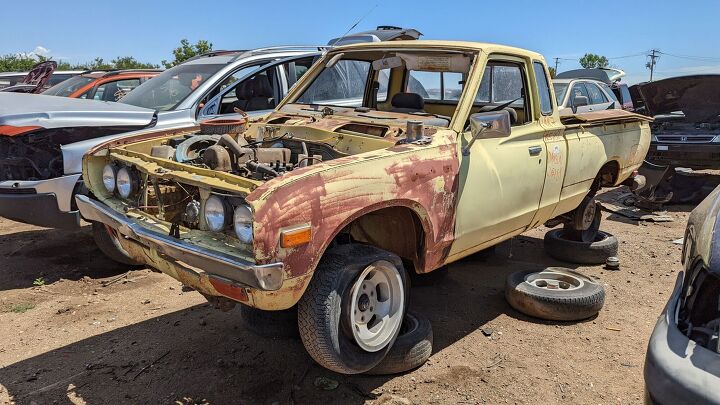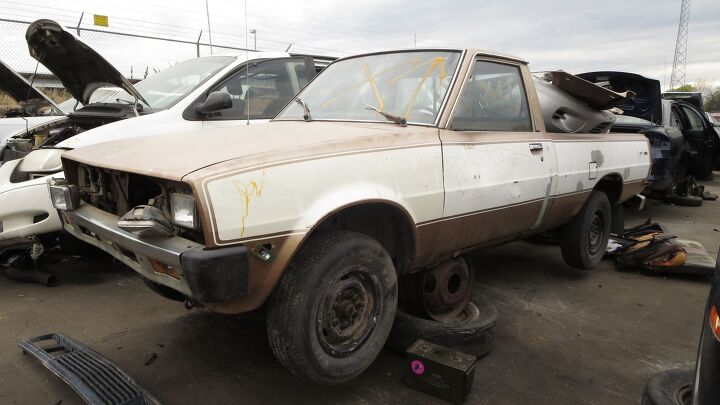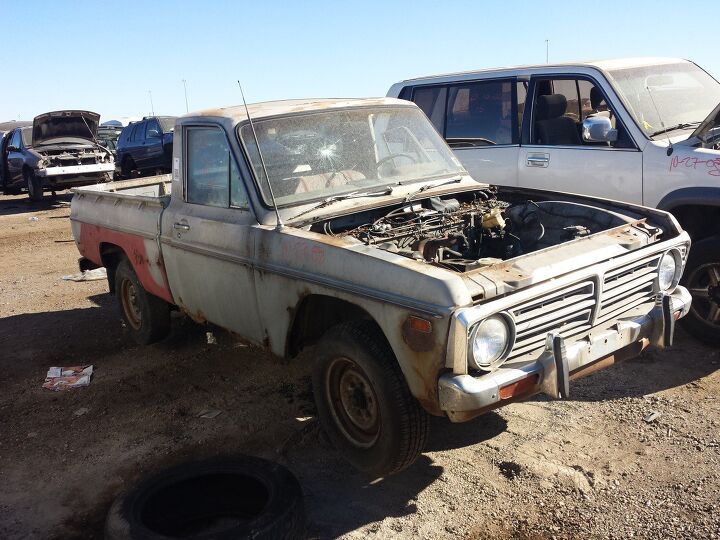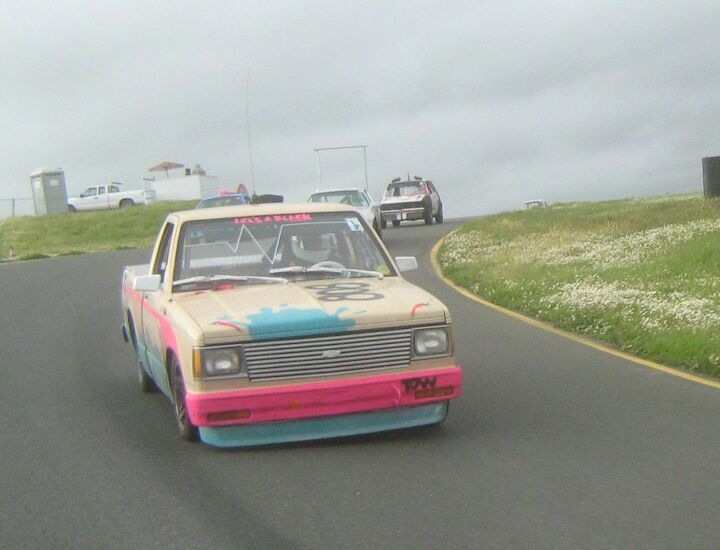#MiniTruck
Junkyard Find: 1977 Datsun 620 King Cab Truck
The middle 1970s through early 1980s were the Golden Age of small Japanese pickups in the United States, when truck shoppers could choose from various models made by Isuzu, Mazda, Toyota, Mitsubishi, and Nissan. The decade of the 1970s began with Nissan selling the Datsun 521 here and finished just around the time the first Datsun 720s appeared in showrooms, with the workhorse 620 in between and proving a tough competitor for the Toyota Hilux and (Mazda-built) Ford Courier.
This week's Junkyard Find is a much-battered 1977 Datsun 620 King Cab, found in a self-service yard located on the High Plains between Denver and Cheyenne.
Junkyard Find: 1983 Dodge Ram 50 Prospector
Small pickups sold pretty well in the United States during the Malaise Era, and Ford and GM cashed in by importing and rebadging Mazda and Isuzu trucks, respectively. Chrysler, late to the party, turned to longtime partner Mitsubishi and began bringing in first-generation Forte pickups, starting in the 1979 model year.
Here’s a Dodge-badged version I found last week in a Denver self-service yard.
Junkyard Find: 1976 Ford Courier
After the ’79 Chevy LUV Junkyard Find we saw yesterday, it seems appropriate to follow up with another Malaise Era Japanese small pickup with Detroit badging. I found this Ford-badged Mazda B1800 just a couple of rows away from the LUV. It’s three years older and much rougher than the Chevy (Isuzu).
Licensed To Ill: Historically Accurate 80s Custom Minitruck Hits Race Track, Has the Boom
For several years in the middle part of the 1980s, lowered minitrucks with pastel graphics and booming sound systems were extremely popular. Then, without warning, just about every last one of them disappeared. Where did they go? We can’t say, but we’re pleased to announce that Team Licensed To Ill has brought the custom minitruck back… and thrashed it all weekend at the Sears Pointless 24 Hours of LeMons.



















Recent Comments